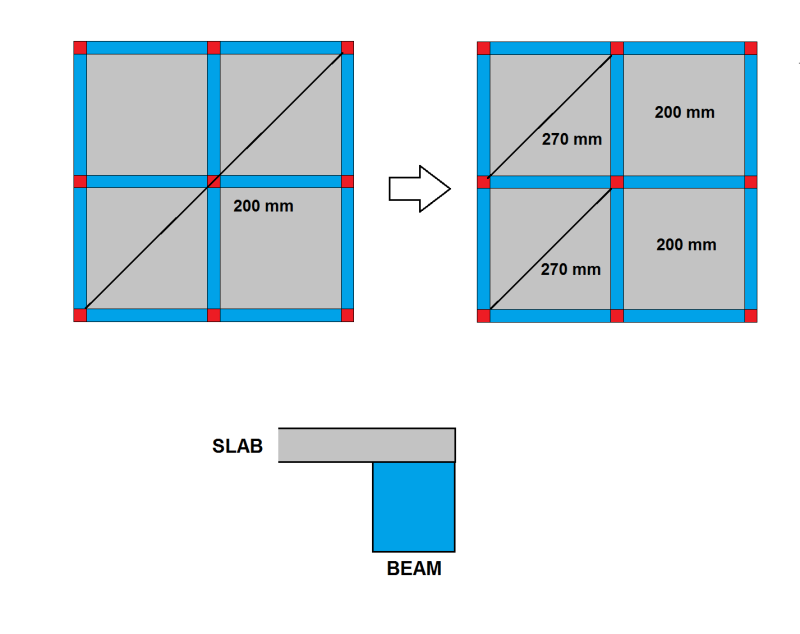I m dealing with an existing RC slab.
I have a data about existing reinforcement.
After reconstruction (different purpose of structure - larger load on existing slab)I figured that existing reinforcement is not gonna be sufficient - in both zones (on both sides of a slab).
So I was thinking about adding another layer of concrete - let say 50 - 100 mm on an existing slab and reinforce it so I have sufficient reinforcement there and since slab is now thicker the existing reinforcement (tension reinforcement in bottom zone of a slab) is now gonna be sufficient. I have to properly connect new layer of concrete to existing (with dowels that can transfer horizontal shear flow) so slab will act as a composite - one element.
What do you guys think? Any other options?
If existing reinforcement in top zone of a slab is sufficient, then i would normally use/add FRP - fiber reinforced polymer at the bottom of a slab, but since reinforcement is not sufficient in both zones of a slab i think thats not the best idea. BTW can you glue FRP materials on both sides of a slab? I have seen only on the bottom side...
I have a data about existing reinforcement.
After reconstruction (different purpose of structure - larger load on existing slab)I figured that existing reinforcement is not gonna be sufficient - in both zones (on both sides of a slab).
So I was thinking about adding another layer of concrete - let say 50 - 100 mm on an existing slab and reinforce it so I have sufficient reinforcement there and since slab is now thicker the existing reinforcement (tension reinforcement in bottom zone of a slab) is now gonna be sufficient. I have to properly connect new layer of concrete to existing (with dowels that can transfer horizontal shear flow) so slab will act as a composite - one element.
What do you guys think? Any other options?
If existing reinforcement in top zone of a slab is sufficient, then i would normally use/add FRP - fiber reinforced polymer at the bottom of a slab, but since reinforcement is not sufficient in both zones of a slab i think thats not the best idea. BTW can you glue FRP materials on both sides of a slab? I have seen only on the bottom side...

![[idea] [idea] [idea]](/data/assets/smilies/idea.gif)
![[r2d2] [r2d2] [r2d2]](/data/assets/smilies/r2d2.gif)
